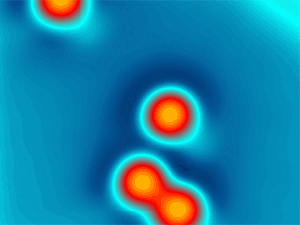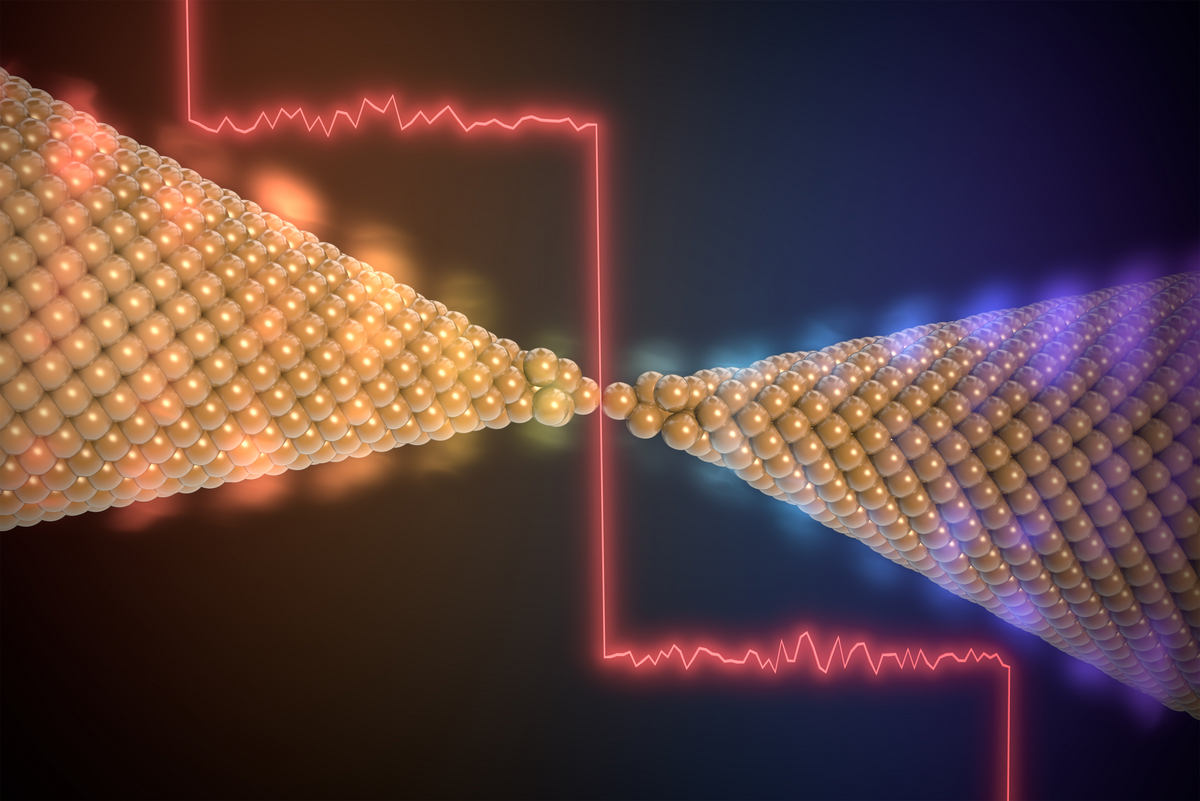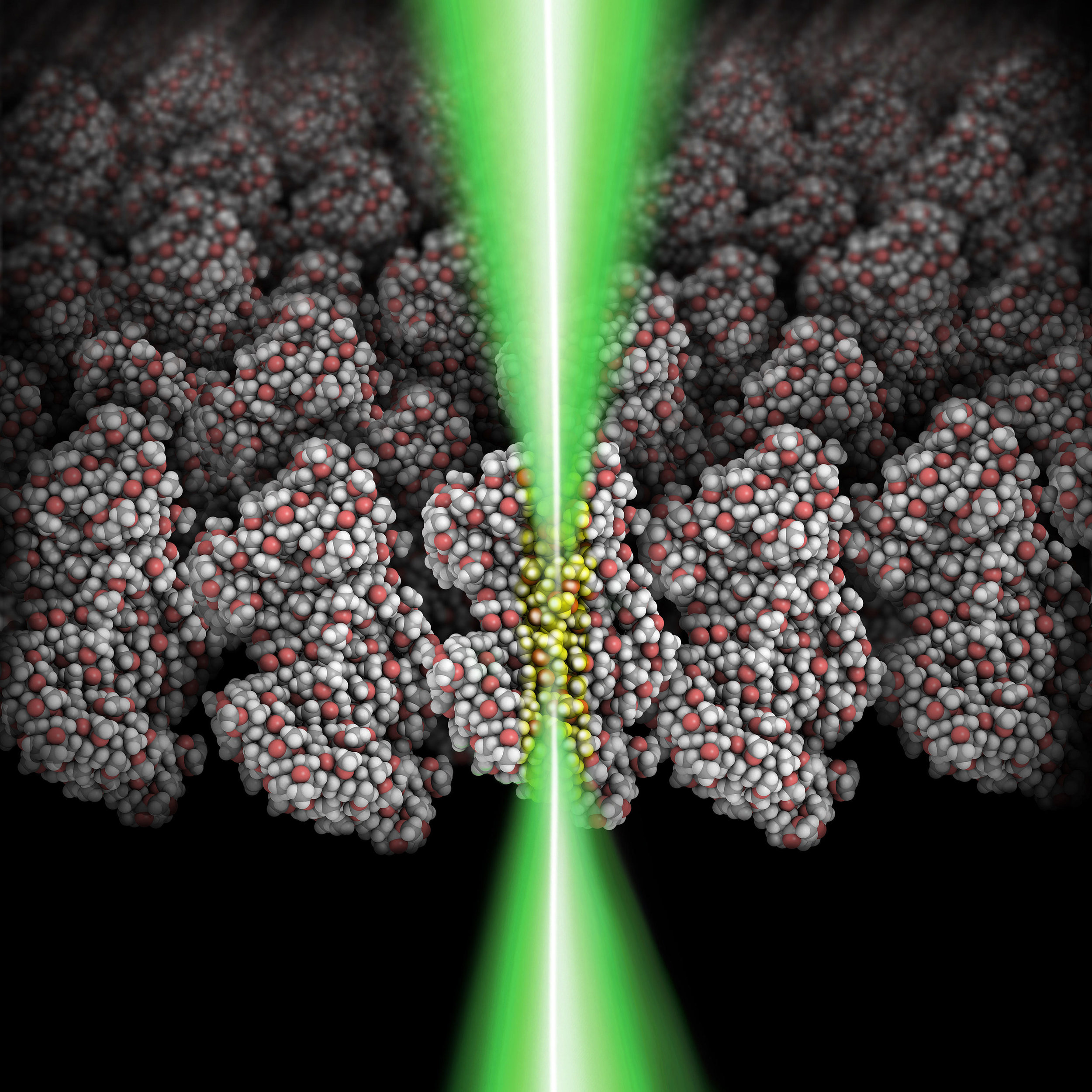New Microscopy Tech Offers a Kind of “Nano-GPS” for Measuring Magnetism of Atoms

Researchers at IBM Research Alamaden have developed a new approach to measuring the magnetic field of individual atoms that for the first time gives scientists the ability to put the sensor exactly next to the atom they want to measure, providing them with a strong and direct signal of the magnetic field. The energy resolution that the new technology provides is more than 1000 times higher than other microscopic techniques, according to its inventors.
The technique involves purposely placing a "sensor" atom near the “target” atom to measure the latter’s magnetic field. These sensor atoms—also known as electron spin resonance (ESR) sensors—were first developed by IBM back in 2015 and are used inside of scanning tunneling microscopes (STMs). STMs—which detect the tunneling of electrons between the an ultra-sharp probe as it’s scanned across a surface—allow atom-by-atom engineering, so that the positions of both the sensor and the target atoms can be imaged to locate them with atomic precision.
This latest advance in STMs with ESR technology described in the journal Nature Nanotechnology marks a distinct change from how the magnetic fields of atoms have previously been measured.
“We have shown in the paper how to perform a kind of ‘nano-GPS’ imaging, to detect where other magnetic atoms were located purely by the spin resonance signal on several fixed sensor atoms,” says Christopher Lutz, a staff scientist at IBM Research Almaden. “We intend to use this to image where magnetic centers are in molecules and nanostructures on the surface.”
Prior to this latest work, one of the most notable techniques for measuring the magnetic fields of atoms involved exploiting defects in diamond—called nitrogen-vacancy (NV) centers—which can measure the magnetic fields from individual atoms within the diamond crystal.
But with that approach the NV center location is random; it cannot be moved around within the diamond crystal, according to Lutz. He further notes that while the diamond containing the NV can be moved near another object to image it magnetically it is presently limited to about 10 nanometers distance, because it is hard to get an NV center with usable properties close enough to the diamond surface.
Lutz also points out that there had been earlier work at IBM in measuring the magnetic field of atoms in which they demonstrated it was possible to detect a weak magnetic force from an individual atom. However, “the signals were very challenging to detect,” he says. “The signal from the new STM technique is much stronger and more robust. We can sense the magnetic field of other atoms directly, which gives clear measure of their magnetic moments and other magnetic properties.”
This additional information on the magnetic properties of atoms complements the other kinds of information that regular STMs give, like the location of atoms on a surface and their tunneling spectra—the conductance as a function of the voltage. (The latter gives information on the an atom’s electronic structure.) According to Lutz, this means an energy resolution that is 1000 times as sensitive as other microscopic techniques, making it possible to see weak interactions.
“This allows weak interaction like magnetic coupling between well-separated atoms to be measured,” he says. “It can probe structures non-invasively, from several nanometers away, where they are undisturbed by our probe atom.”
The operating principle of these ESR sensors depends on what happens when an atom with unpaired electron spins is placed in a magnetic field. It does something called “precess”, which means its axis rotates around the magnetic field at a precise frequency. This frequency depends on the field strength and the atom's magnetic moment, which is the strength of the atom's magnetism.
“In our experiment, we apply a magnetic field to the microscope, and then apply a high-frequency voltage to the tunnel junction of the microscope,” explains Lutz. “When the frequency matches the frequency of the spin precession, it drives the spin away from its thermal equilibrium, in which it is mostly aligned with the magnetic field.”
This change in orientation is detected by transferring a single magnetic “sensor” atom, in this case iron, to the microscope tip. The frequency is swept through the resonance frequency, and a sharp change in tunnel current appears precisely at the resonant frequency. The resonance frequency moves in response to nearby magnetic atoms.
“The physical principle is the same as for magnetic resonance imaging except that we detect electron precession instead of nuclear precession, and we address individual atoms instead of billions of them, by positioning the tip over the atom of interest,” adds Lutz.
The technical hurdles in achieving these measurements are pretty high. First, high-frequency cabling is needed to bring gigahertz signals to the STM tip in order to drive the atom's spin resonantly. Meanwhile, the STM itself must be maintained in an ultra-high vacuum, at liquid helium temperatures, and in an applied magnetic field of just the right magnitude.
“We remain the only group able to perform single-atom ESR in an STM,” says Lutz. “However, we are studying ways to relax the stringent conditions needed to make it work, in order to make this a more general technique and so other groups can make use of it.”
Lutz expects that a few other research groups will be able to perform this measurement once they install a gigahertz connection in their STM.
“We hope to achieve spin resonance on a wider variety of atom types and surface materials, and to relax the extreme conditions needed for this experiment, so that in time more labs can use it,” he says.





